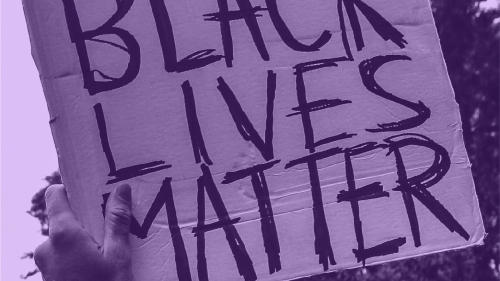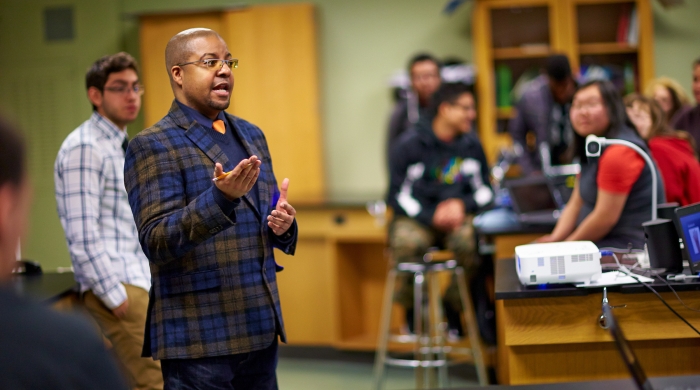
To learn directly from middle and high school students, NYU Steinhardt’s Department of Teaching and Learning organized a panel as part of the National Week of Action for Black Lives Matter at School. The event was open to teachers and school leaders around the country. Many of the speakers attend schools that are partners in the NYU Teacher Residency, a program built on the belief that our schools must have a teaching force that reflects local communities.
During the February 4, 2021 discussion moderated by NYU Steinhardt faculty members Ayanna Taylor, clinical assistant professor of English education, and Heather Woodley, clinical associate professor of TESOL, bilingual education, and foreign language education and recent recipient of the NYU Dr. Martin Luther King Jr. Faculty Award, students shared their visions to combat anti-Blackness in schools. The event marked the third year the Department of Teaching and Learning offered a program during the National Week of Action for Black Lives Matter at School, which kicks off Black History Month.
Taylor opened the conversation with the traditional greeting from the Masai warriors, which translates to “And how are the children?” She explained, “Today’s student panel is our attempt to go directly to the source and ask them: ‘How are you?’”
Student panelists came from from:
- Girls Prep Lower East Side Middle School, New York, NY
- Fannie Lou Hamer Freedom High School, Bronx, NY
- Wellesley High School, MA
- Rogers Park Middle School, Danbury, CT
- Capital Prep Harlem Charter School, New York, NY
- Thurgood Marshall High School, San Francisco, CA
Here are highlights of the students’ poignant remarks:
What does it mean when teachers say Black Lives Matter?
- “That we, [as Black students] have events and opportunities to speak.”
- “When someone says ‘Black Lives Matter,’ it can mean a multitude of things but it’s how they show it! Sometimes they go to marches or they open up mentors to the community. That’s how you should do it – show it.”
- “That they understand that police brutality exists in our country. And they make students of color feel comfortable and supported in the classroom.”
What can your teachers or schools do more of or do differently to fight anti-Blackness and support Black Lives Matter in your school?
- “[They can] teach more about Black Lives Matter and Black history. And even just take one day a month to learn about a Black woman and how she’s succeeded.”
- “We need consistent lessons about biases and racism – things that aren’t built for ‘white comfort.’”
How can people be allies for Black lives?
- “Implicit bias is something that can’t be whisked away. It needs to be continuously worked on.”
- “We can also educate friends on what is going on in today’s world – things like police brutality and the Black Lives Matter movement.”
- “We have a role in educating our own family members, too.”
- “I want teachers to have an open mind and be brave to have tough conversations.”
What is one piece of advice for teachers to better support students?
- “Teachers should make Black lives and Black Lives Matter [part of] our subjects.”
- “[Schools can] plan events that highlight and promote Black lives.”
- “[We need to understand that] Black pain is not Black culture. Schools need to start teaching Black excellence.”
At the conclusion, student panelists said sharing their ideas, stories, and reflections directly with school leaders and teachers was an incredible experience. The discussion provided a useful reminder that the more we listen to students, the better we can provide them with supportive and safe learning environments.
This story originally appeared on our NYU Teacher Residency blog. Learn more about the Teacher Residency.

